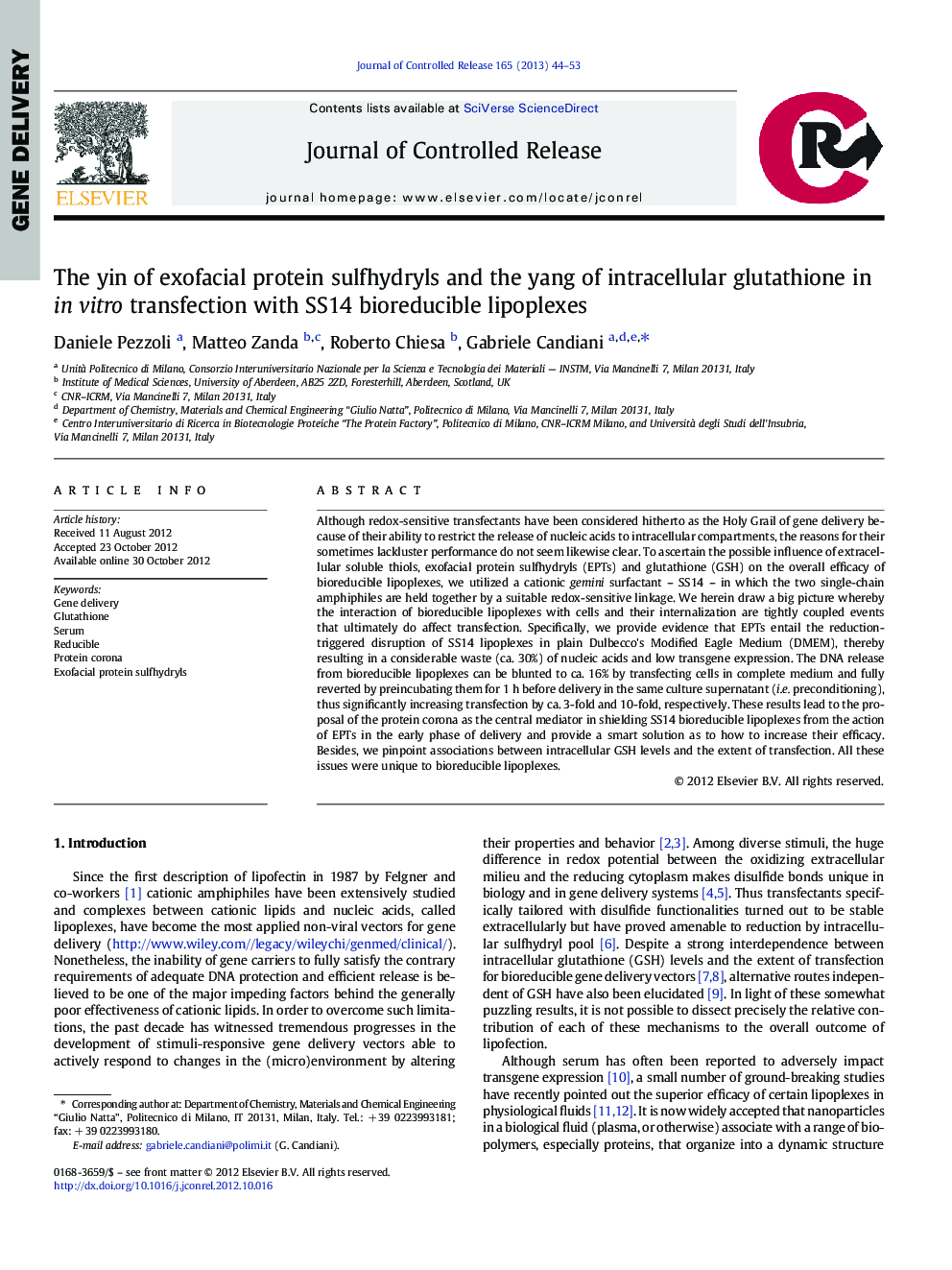| Article ID | Journal | Published Year | Pages | File Type |
|---|---|---|---|---|
| 1424281 | Journal of Controlled Release | 2013 | 10 Pages |
Although redox-sensitive transfectants have been considered hitherto as the Holy Grail of gene delivery because of their ability to restrict the release of nucleic acids to intracellular compartments, the reasons for their sometimes lackluster performance do not seem likewise clear. To ascertain the possible influence of extracellular soluble thiols, exofacial protein sulfhydryls (EPTs) and glutathione (GSH) on the overall efficacy of bioreducible lipoplexes, we utilized a cationic gemini surfactant – SS14 – in which the two single-chain amphiphiles are held together by a suitable redox-sensitive linkage. We herein draw a big picture whereby the interaction of bioreducible lipoplexes with cells and their internalization are tightly coupled events that ultimately do affect transfection. Specifically, we provide evidence that EPTs entail the reduction-triggered disruption of SS14 lipoplexes in plain Dulbecco's Modified Eagle Medium (DMEM), thereby resulting in a considerable waste (ca. 30%) of nucleic acids and low transgene expression. The DNA release from bioreducible lipoplexes can be blunted to ca. 16% by transfecting cells in complete medium and fully reverted by preincubating them for 1 h before delivery in the same culture supernatant (i.e. preconditioning), thus significantly increasing transfection by ca. 3-fold and 10-fold, respectively. These results lead to the proposal of the protein corona as the central mediator in shielding SS14 bioreducible lipoplexes from the action of EPTs in the early phase of delivery and provide a smart solution as to how to increase their efficacy. Besides, we pinpoint associations between intracellular GSH levels and the extent of transfection. All these issues were unique to bioreducible lipoplexes.
Graphical abstractFigure optionsDownload full-size imageDownload high-quality image (346 K)Download as PowerPoint slide
